 |
 |
 |
| |
THE IMPACT OF IMMIGRATION ON THE NATIONAL
HEPATITIS B PREVALENCE IN THE UNITED STATES
|
| |
| |
NHANES underestimates the burden of HBV in the US - require culturally sensitive programs - should be facilitated by community and patient advocacy groups that are able to properly address the needs of their community
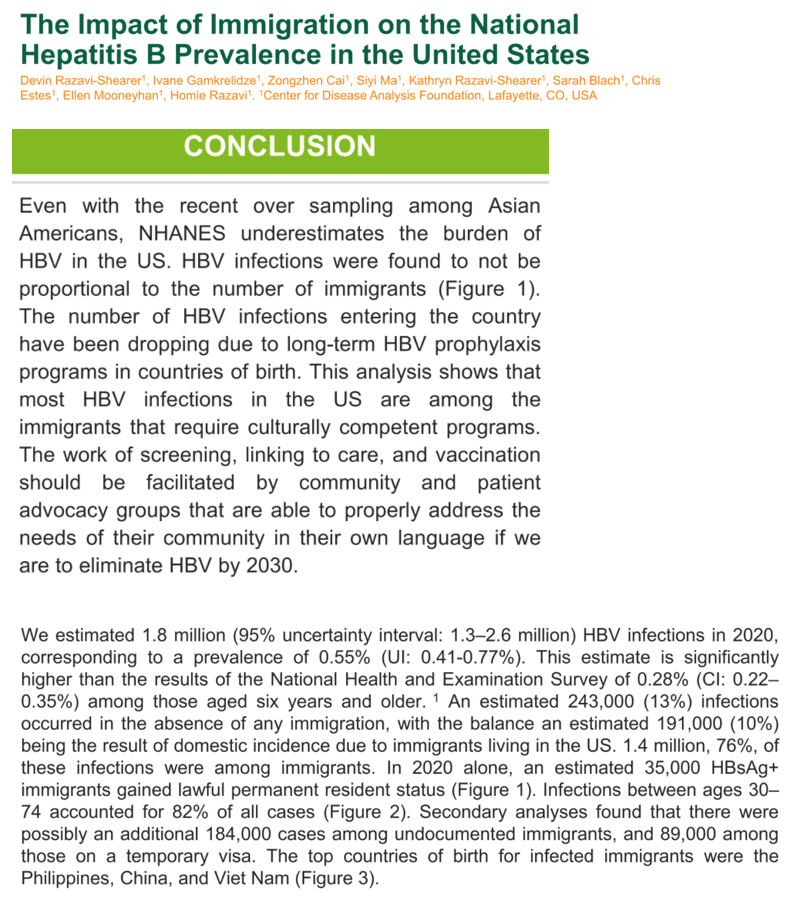
AASLD 2021 Nov 12-15
Devin Razavi-Shearer1, Ivane Gamkrelidze1, Kathryn Razavi-Shearer2, Sarah Blach1, Chris Estes1, Ellen Dugan1, Homie Razavi1, Zongzhen Cai1 and Siya Ma1, (1)Center for Disease Analysis Foundation, (2)Analysis, Cda Foundation
Background: The prevalence of the hepatitis B virus (HBV) in the United States (US) has been the subject of a great deal of debate. The lack of reliable data makes it difficult to assess the progress the country has made towards the elimination of HBV as a public health threat. The objective of this study was to develop a more accurate estimate of HBV prevalence in the US and to identify key immigrant populations that need to be screened, vaccinated, and linked to care to work towards elimination.
Methods: US immigration data from 1900 forward and 164 country-level models were utilized to estimate the annual HBV infections entering US among immigrants by age, sex, and stage. These imported cases contributed new infections in US with mortality (all cause and liver related) being taken into account to estimate the total number of HBV infections in 2020.
Results: We estimated 1.8 million (95% uncertainty interval: 1.3-2.6 million) HBV infections in 2020, corresponding to a prevalence of 0.55% (UI: 0.41-0.77%). This estimate is significantly higher than the results of the National Health and Examination Survey (NHANES). 1.4 million, 76%, of these infections were among immigrants. Infections between ages 30-74 accounted for 82% of all cases. Secondary analyses found that there were possibly an additional 184,000 cases among undocumented immigrants, and 89,000 among those on a temporary visa. The top countries of birth for infected immigrants were the Philippines, China, and Viet Nam (Figure 1).
Conclusion: Even with the recent over sampling among Asian Americans, NHANES underestimates the burden of HBV in the US. HBV infections were found to not be proportional to the number of immigrants (Figure 1). The number of HBV infections entering the country have been dropping due to long-term HBV prophylaxis programs in countries of birth. This analysis shows that most HBV infections in the US are among the immigrants that require culturally sensitive programs. The work of screening, linking to care, and vaccination should be facilitated by community and patient advocacy groups that are able to properly address the needs of their community in their own language if we are to eliminate HBV by 2030.
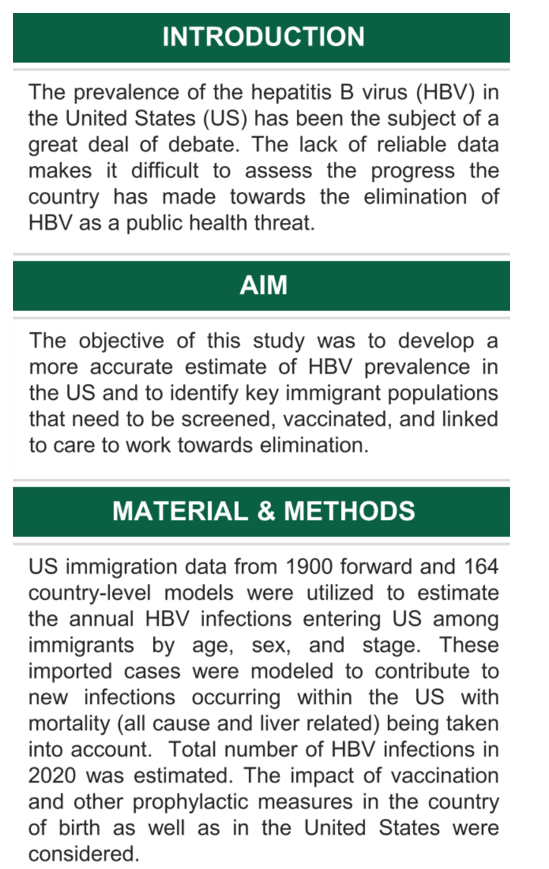
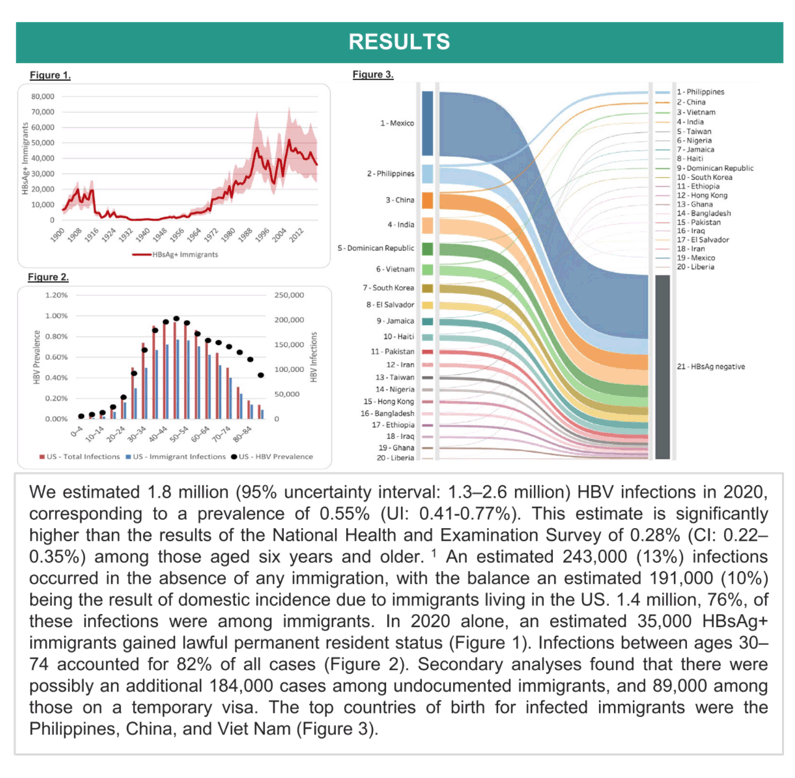
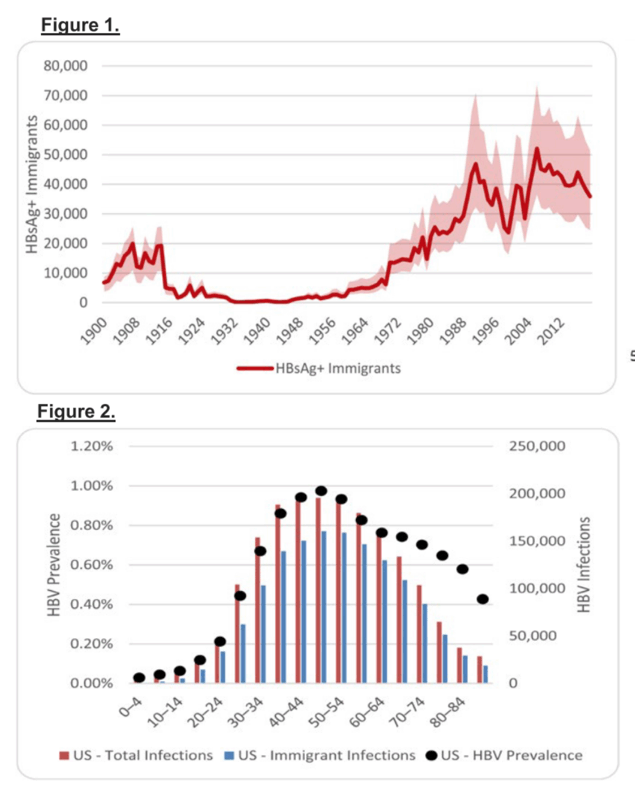
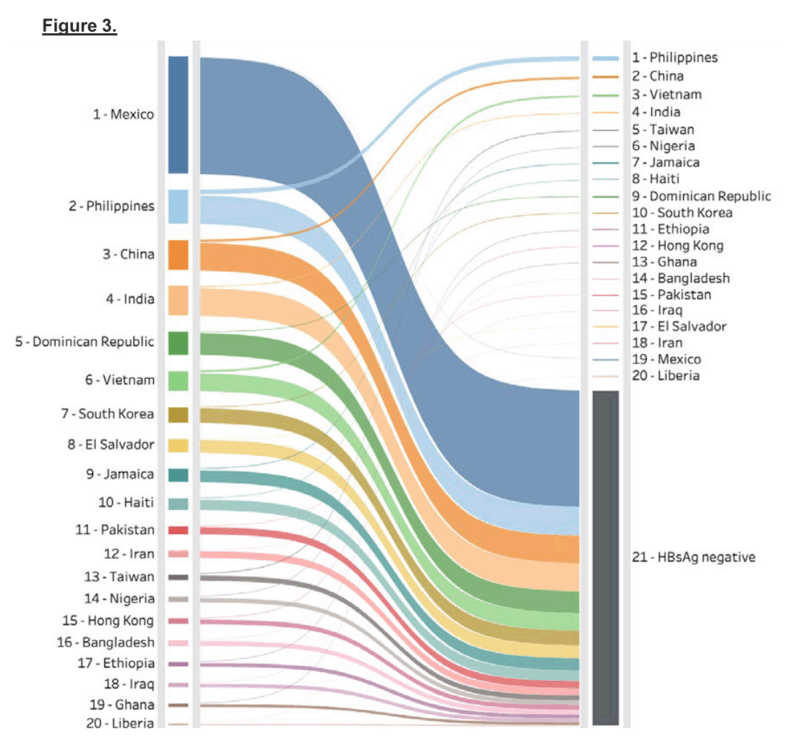
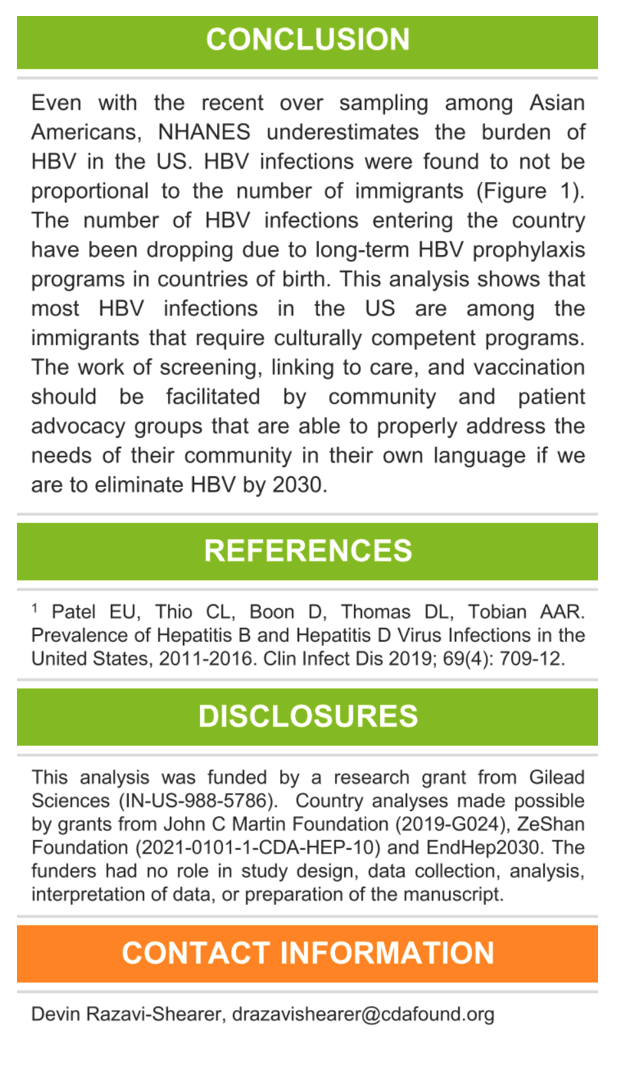
|
| |
|
 |
 |
|
|